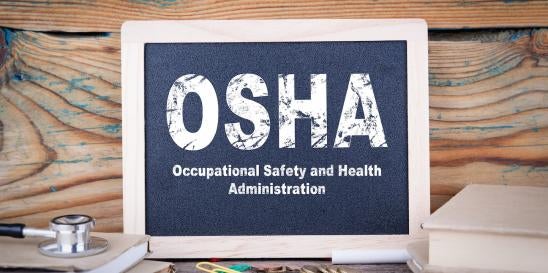The Occupational Safety and Health Administration (“OSHA”) recently announced a Notice of Proposed Rulemaking that would make it easier for non-employee representatives to participate in worksite inspections.
OSHA compliance safety and health officers (CSHOs) regularly conduct worksite inspections, colloquially known as “walk-arounds,” as part of their investigation of safety complaints or pursuant to OSHA emphasis programs. Current regulations allow employees to select a representative of their choosing to accompany the CSHOs on such inspections, as long as the representative is also an employee of the relevant employer. If employees want to select a third-party to represent them on a walk-around, the regulations suggest that person must normally have specialized safety knowledge, like an industrial hygienist or safety engineer. See 29 CFR 1903.8(c).
Under OSHA’s new proposal, employees could select any third-party to represent them on a walk-around inspection, as long as the CSHO determines the third party’s participation is reasonably necessary to the conduct of a thorough inspection. The proposal removes the limiting language from the regulation related to industrial hygienists and safety engineers, and replaces it with language that indicates a third-party representative may be helpful to the CSHO based on their relevant knowledge, skills or experience with hazards or conditions in the workplace or similar workplaces, or based on their language skills.
If adopted, the proposal will open the door for outside, non-employees without any safety expertise to access sensitive workplace inspections. For instance, the Notice of Proposed Rulemaking suggests employees at a workplace may designate a union official to serve as their walkaround representative, even if the union does not represent the relevant employees in collective bargaining. It further suggests that CSHOs may determine that bilingual community organizers or advocates with no relevant safety experience may access an employer’s worksite during an inspection solely because of their language skills.
And while the current proposed regulation maintains the requirement that a CSHO determine the presence of a third-party is “reasonably necessary,” OSHA’s request for public comments suggests it may scrap that requirement completely. OSHA has specifically asked for feedback on whether it should “defer to the employees’ selection of a representative” without consideration of whether that representative would actually aid in the conduct of the inspection. Alternatively, OSHA sought comments on whether it should establish a presumption in favor of the necessity of the third party representative.
The Department of Labor will receive comments from stakeholders on the proposed regulation until October 30, 2023. It is likely that a revised rule will be released sometime in 2024.
If OSHA adopts the proposed rule, it presents several risks for employers. First, it could compel employers to allow non-employee third-parties into sensitive areas of their workplace. While employers can require OSHA to obtain a warrant to conduct an inspection, that process imposes additional costs on employers and may lead OSHA to view them as uncooperative. Thus, employers typically do not require a warrant and simply consent to inspection of the relevant areas of their establishment. Under the new rules, consenting to an inspection could open up an employer’s worksite to scrutiny by not only OSHA, but also outsiders who would otherwise have no right to access the employer’s property.
Second, the proposed rule provides a clear opportunity for union organizers to use OSHA inspections as a backdoor to campaign for employee support. Since the rule would apply to both union and non-union workplaces, it is reasonable to expect unions to monitor OSHA complaint filings, contact employees and attempt to receive authorization to attend walkarounds so they can use the site access to solicit for employee support. Pro-union employees attempting to organize their co-workers could also weaponize the process by filing OSHA complaints and selecting union representatives to accompany CSHOs on walkarounds as a way to provide additional site access to these outside organizers and attempt to show their value by taking credit for any subsequent OSHA citations. In essence, it could allow employees to pervert the purpose of the OSH Act to further their union organizing interests.
The proposed rule provides extra incentives for employers to avoid safety complaints and workplace inspections altogether. Employers should review their workplace safety policies and conduct regular audits or self-checks of their safety programs to reduce the risk of employee complaints and decrease the likelihood that OSHA has reason to show up with an undesired tag-along to explore their workplace.





 i
i


